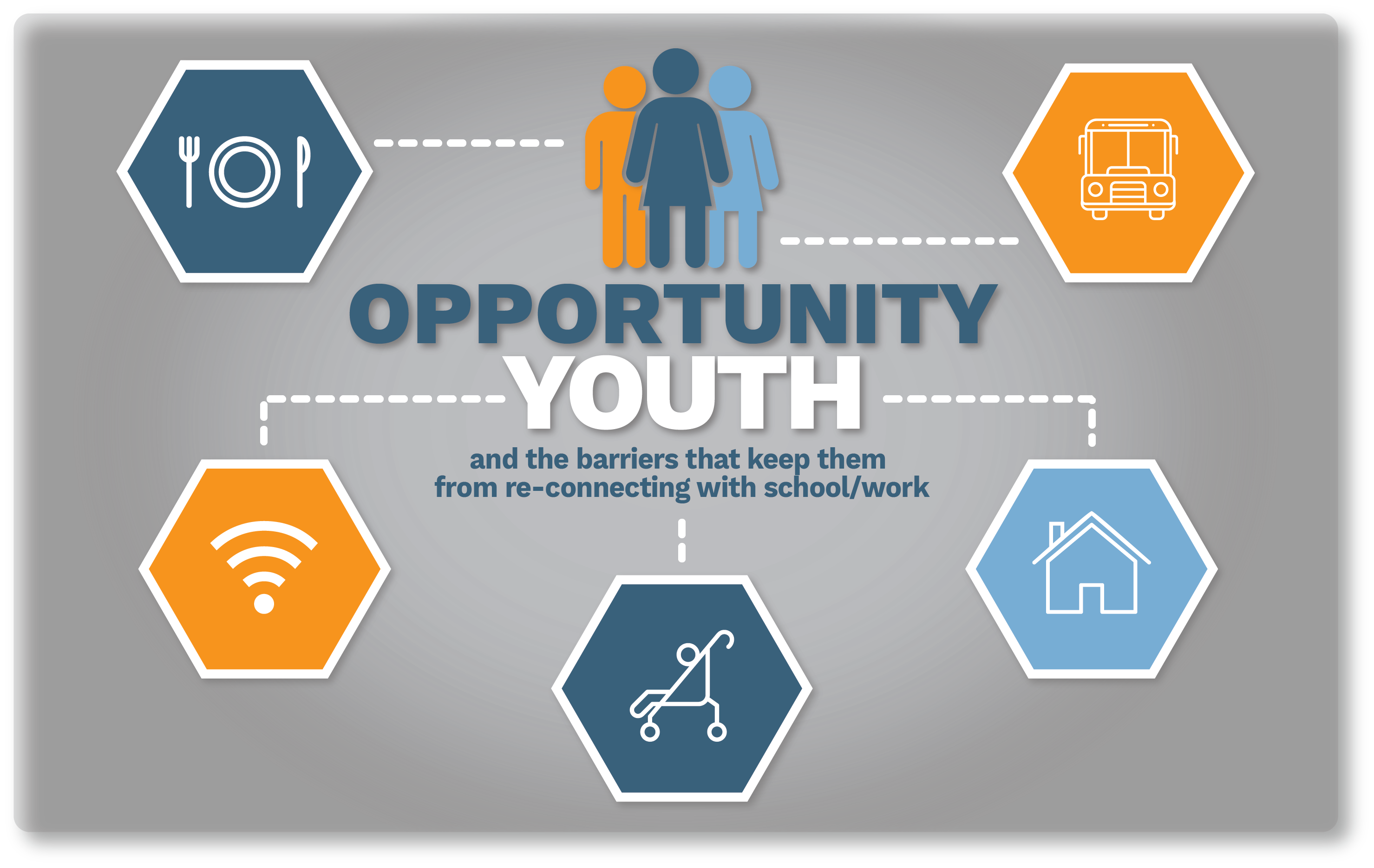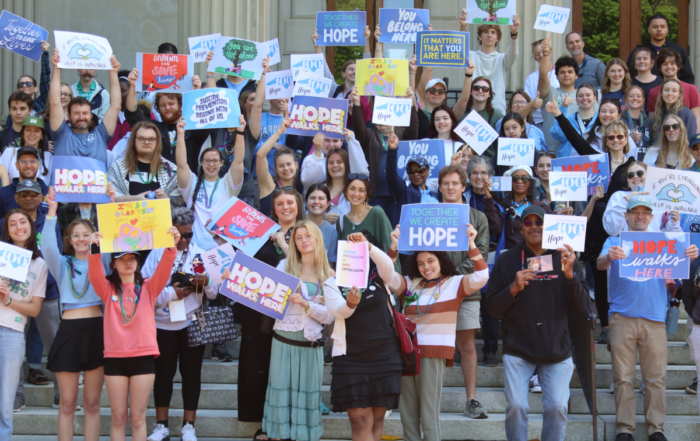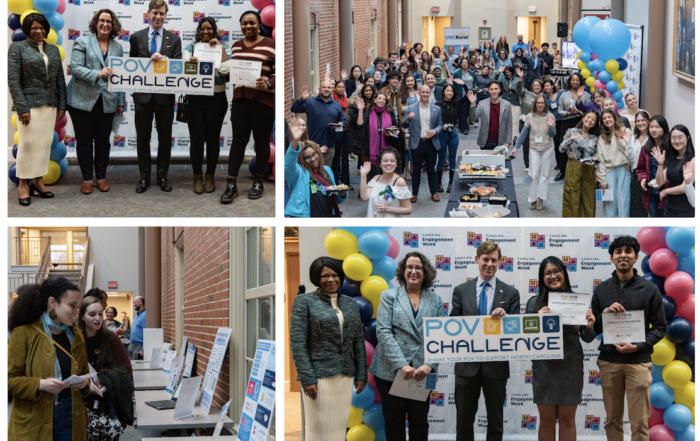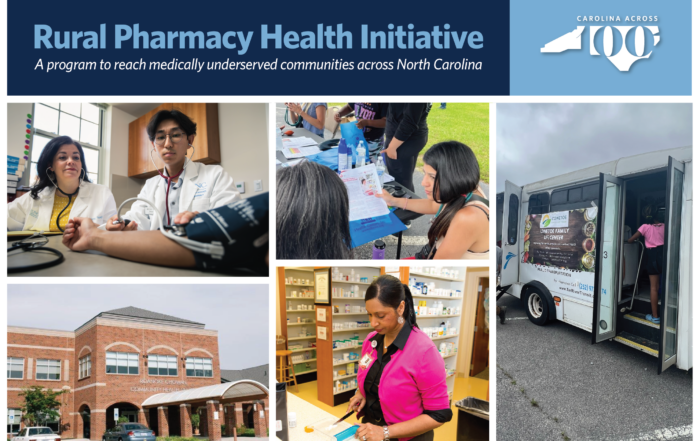Education | Employment
Meeting Them Where They Are: Supporting Opportunity Youth in North Carolina
Jess Dorrance, Carolina Across 100 Research Director
May 26, 2022

On June 1, UNC-Chapel Hill’s Carolina Across 100 initiative will announce the communities participating in our first program focused on Opportunity Youth. To prepare, we want to revisit who Opportunity Youth are, why they are so important, and how we can continue to better support them.
Who Are Opportunity Youth?
Opportunity Youth are young adults ages 16 to 24 who are not enrolled in school and not working full or part time. These individuals are sometimes referred to as disconnected youth, however, at Carolina Across 100 we prefer “Opportunity Youth” because it captures our sense of optimism that all young people can thrive if we provide the systems, tools, and resources necessary for navigating this period of life.
For nearly a decade – during the recovery from the great recession and prior to the COVID-19 pandemic – the percentage of Opportunity Youth had been steadily declining nationally, from 14.7 percent in 2010 to 10.7 percent in 2019.
Although updated data are not publicly available, estimates suggest that those recent improvements in Opportunity Youth rates have been completely stripped away by COVID-19.
In fact, the pandemic delt a double whammy to this age group. First, national data shows that the unemployment rate for people ages 16 to 24 skyrocketed to 24.4 percent between the spring of 2019 to the spring of 2020. This is due, in large part, to the fact that younger workers tend to be employed in jobs and sectors that have been especially hard hit by COVID-19.
Second, for students enrolled in school, including both K-12 and post-secondary education, the abrupt shift to online learning came with significant challenges. This was especially true for those without the necessary technological tools, such as reliable internet and computing devices, and/or the emotional supports to stay engaged and make this transition successfully.
Why Are They So Important?
The late teens and early twenties are formative years for exploring and understanding our identities, interests, and aspirations. These years are also a critical time for gaining skills and knowledge and establishing social and mentor networks that create a foundation for adulthood and shape overall life trajectories.
The experiences for young adults are not just individually impactful, they have major implications for our economy and for the social, physical, and emotional wellbeing of communities. Recent research indicates that there are pronounced differences on outcomes such as employment, income, homeownership, and health when comparing young adults who have become disconnected from school or work versus those who have remained consistently connected. This research estimates that there is an additional $12,000 of tax revenue per person per year for individuals who remain connected compared to those who do not. That amount, multiplied by the number of Opportunity Youth, would equal approximately $55 billion in potential federal revenue gain per year. Not only does UNC owe our young people the supports and opportunities they need to create secure and prosperous futures, we literally can’t afford to leave any of our young adults behind.
The State of Opportunity Youth in North Carolina
The percentage of Opportunity Youth in North Carolina in 2019 was 11 percent, slightly above the national average (10.7%). Like the nation, the percentage of Opportunity Youth in our state varied across counties, with a high of 26.6 percent in Hertford County and a low of 4.2 percent in Orange County. The map below illustrates those ranges across the state. Hover over individual counties or type the name of a county into the search bar to find more specific data.
In addition (and sometimes related) to geographic differences in the percentage of Opportunity Youth, there are demographic differences across racial/ethnic groups and by gender. For instance, in North Carolina, American Indians have the highest average rate of Opportunity Youth, at 20 percent. Black and Hispanic youth also have rates that are above the statewide average, at 15.6 percent and 12.5 percent respectively. Women have higher rates of Opportunity Youth compared to men, at 11.4 percent for women versus 10.7 percent for men.
The discrepancies in impact across race and gender can be partially traced to centuries old structural inequalities that have contributed to higher rates of intergenerational poverty and inequitable access to resources for low-wealth households, communities of color, and for some women. In some cases, the pandemic widened these disparities. And, where there was not a widening, the pandemic brought a new exposure of the depth of some disparities by income/wealth, race, and gender. It is also true, though, that the pandemic created a sense of urgency to address these issues and move towards more equitable systems and more effective supportive structures.
That is not easy work. And, it is not work that any one sector or organization or policy can achieve on its own. A range of factors typically lead to disconnection from school and/or work and range of collaborative efforts is required to bring people back and to create new and expanded pathways for that journey.
Barriers to Re-Engagement
Opportunity Youth are more likely than their peers to be homeless, disabled, uninsured, living in poverty facing food insecurity and living in institutional settings.
In addition to these factors, there are barriers that can make re-engagement more difficult once someone has disconnected for school or work. Some of the most significant include sustained insecurities in basic needs, such as food, housing, and healthcare. Many Opportunity Youth also struggle with a lack of access to reliable internet services, to safe and affordable transportation, and to high-quality, affordable childcare.
Again, it will take coordinated efforts to address these issues and reestablish the welcomed trend that was taking place pre-COVID. On top of action at the state and federal policy-level, it will take connecting Opportunity Youth with existing programs and resources within their communities. That will require using input and insights from Opportunity Youth directly to inform the design of connections and solutions. It will take financial resources to sustain that programming and to pilot new initiatives. It will take building and strengthening relationships among diverse community partners so that they can collaborate more effectively towards their shared goals. It will take building community capacity to support current Opportunity Youth and implement additional strategies to reduce this population.
Most importantly, it will take meeting Opportunity Youth (and stakeholders in communities who so desperately want to provide their support) where they are, which means listening to them, knowing their values, drawing on their strengths and insights, leveraging their individual and community assets, and helping to facilitate meaningful change.

Bringing It All Together: The Vision for Carolina Across 100
Carolina Across 100 intends to do just that – bring about meaningful change when and where it is needed most and to start by listening first. Carolina Across 100 is a five-year, pan-University initiative charged by UNC Chapel Hill’s Chancellor Kevin Guskiewicz and led by UNC School of Government professor Anita Brown-Graham to form meaningful partnerships with communities in all one hundred North Carolina counties to respond to challenges stemming from or exacerbated by COVID-19 and aid in community-driven recovery and resilience-building efforts. By providing financial resources, data insights, coaching, facilitation and coordination efforts, and program design support, the University will help co-create solutions with communities to address some of their most pressing needs.
The first program of this initiative, “Our State, Our Work,” will focus on connecting young adults to living wage employment opportunities. The need for this work in this moment is clear. Through the pandemic, our young adults have had to face loss on a scale that was unfathomable before and we must not allow their current and future wellbeing to be another casualty of COVID.
Communities across the state have applied to partner with UNC-CH in these efforts and to learn from one another along the way. On June 1st, we will announce the communities who will be a part of the “Our State, Our Work” program. We cannot wait to get started on these partnerships and to share lessons learned and resources with others across the state and beyond! Our young people can’t wait for us either. You can learn more at http://carolinaacross100, and please stay tuned for our upcoming announcement.






